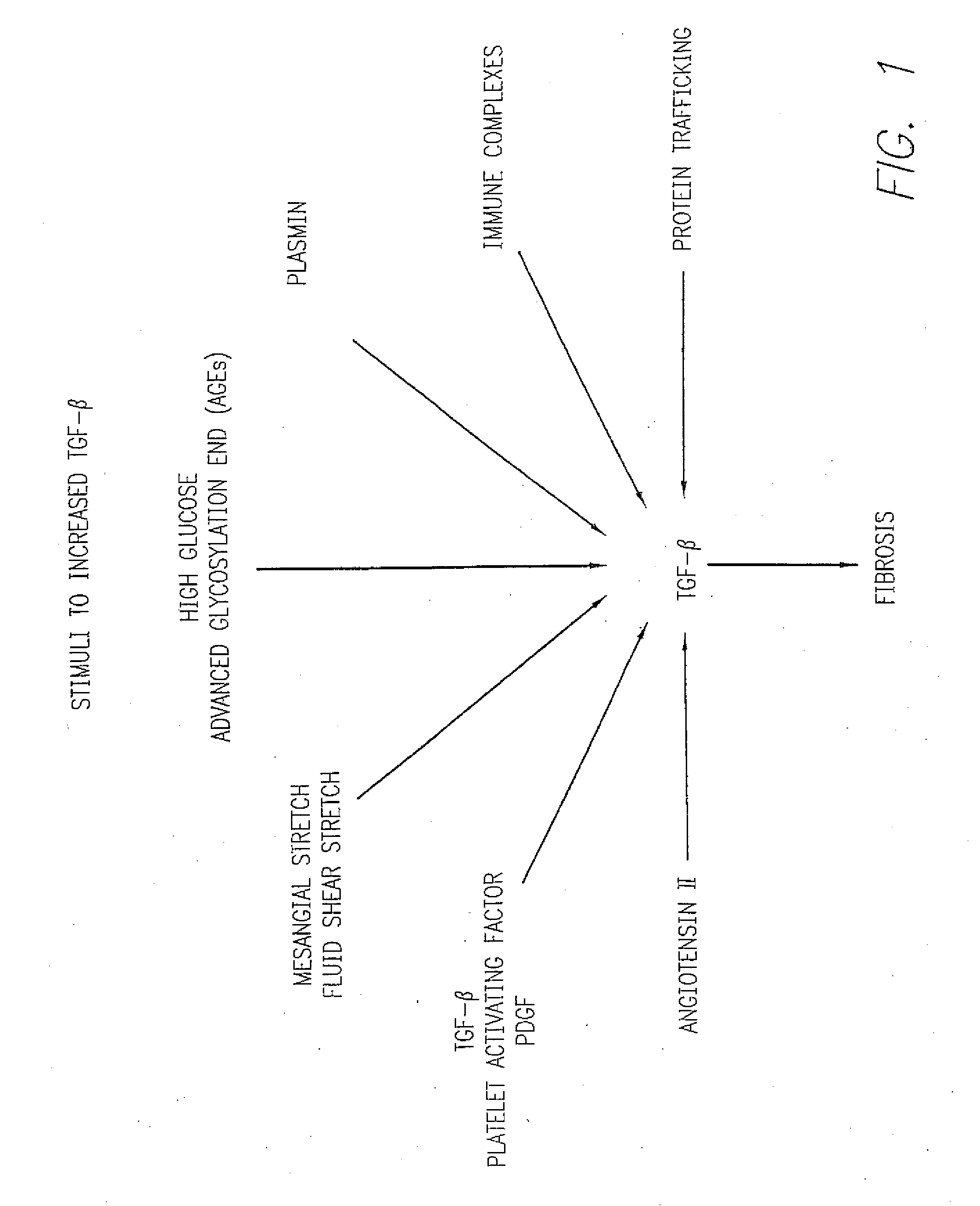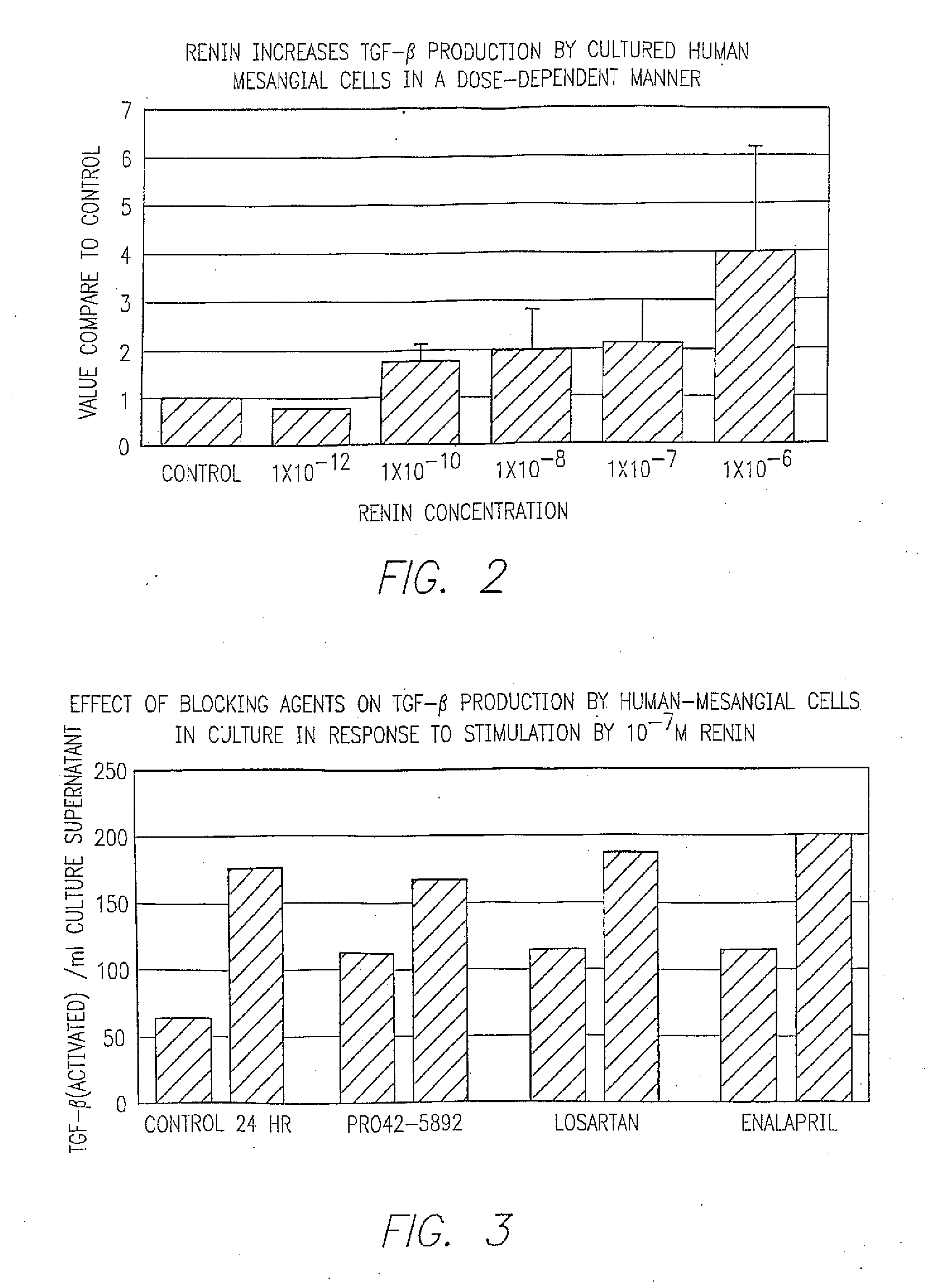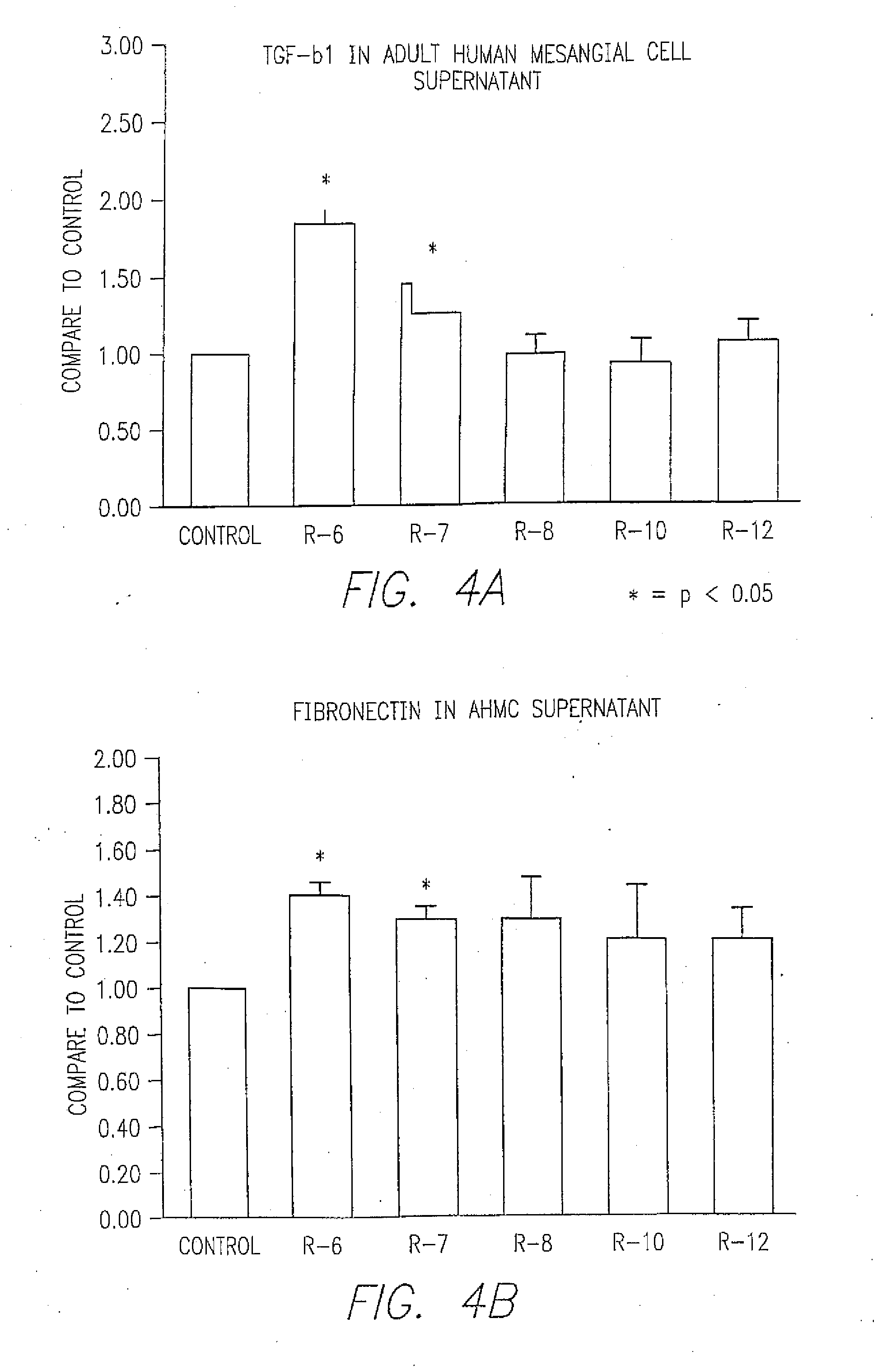Methods for treating conditions associated with the accumulation of excess extracellular matrix
a technology of extracellular matrix and treatment method, which is applied in the direction of antibody medical ingredients, applications, peptide/protein ingredients, etc., can solve the problems of progressive fibrosis, excessive accumulation of fibrous tissue, undesirable cosmetic appearance, etc., and achieve the effect of reducing the accumulation of extracellular matrix and preventing or reducing the accumulation of ecm
- Summary
- Abstract
- Description
- Claims
- Application Information
AI Technical Summary
Benefits of technology
Problems solved by technology
Method used
Image
Examples
example i
Demonstration that Renin Upregulates TGFβ in Human Mesangial Cells
[0114]Normal fetal human mesangial cells (Clonetics Corp., Clonetics, Walkersville, Md.) passaged 5 to 8 times, were plated (3,000 cell / cm2) in 12 well plates in 2 ml of medium (Mesangial Basal Medium (Clonetics Corp.) containing 5% FCS, 10 / g / ml penicillin and 100 μg / ml streptomycin) and allowed to grow to confluence for 48 hours at 37EC, 5% CO2. Cultures were washed three times using sterile phosphate buffered saline at room temperature and then 2 ml / well of serum free MBM medium to induce quiescence. After 48 hours, the serum-free medium was removed and 2 ml / well of fresh serum-free medium was added. Human recombinant renin (Hoffman-La Roche Ltd., Basel, Switzerland) in concentrations from 10−6 to 10−12 M was added to each well. A blank and 5 ng / ml of TGFβ (R & D Systems, Minneapolis, Minn.) were used as controls. Cells and supernatants were harvested by centrifugation after 24 hrs of culture and frozen at −70EC unt...
example ii
Demonstration of the Effect of Inhibiting Renin on TGFβ Production by Human Mesangial Cells
[0116]Renin inhibitor Ro42-5892 (Hoffman-LaRoche, Basel, Switzerland), Losartan™ (Merck Pharmaceuticals, West Point, Pa.), Enalapril™ (Sigma Chemical Co., St. Louis, Mo., Prod. No. E6888), or TGFβ1 neutralizing antibody (R & D Systems) were added in the amounts indicated below to separate wells in triplicate to block the renin cascade at different sites after stimulation by renin:
10−5 M Renin Inhibitor R042-5892 (Hoffman-LaRoche)
[0117]30 ng / ml Anti-TGFβ1 antibody (R & D Systems, #AB 101 NA)
30 ng / ml Chicken IgG (control for anti-TGFβ1 antibody, R & D Systems, # AB 101 C)
10−5 M Enalapril™ (Sigma Chemical Co., St. Louis, Mo.)
10−5 M Losartan™ (Merck Pharmaceuticals, West Point, Pa.)
[0118]These inhibitors were added at zero time with 10−7 M human recombinant renin (Hoffman-LaRoche).
[0119]As shown in FIG. 3, use of inhibitors that block renin's action to increase Angiotensin II, i.e. blocking Angiot...
example iii
Demonstration of Inhibition of TGFβ by Blocking Renin in Vivo in the Presence of an Anti-Fibrotic Drug
[0120]In this example, a known fibrotic disease drug, Enalapril™ which inhibits the production of Angiotensin II, is combined with an inhibitor of renin, antisense renin oligonucleotide, to obtain an enhanced therapeutic effect on fibrotic disease in an animal model.
[0121]Rats are administered Enalapril™ in their drinking water prior to anti-thymocyte serum injection, e.g. three (3) days prior to injection. Anti-thymocyte antibody, e.g. OX-7, is injected intravenously into the rats at day three to produce fibrotic disease. (Bagchus et al., Lab. Invest. 55:680-687 (1986)). Renin antisense oligonucleotides are administered one hour following administration of OX-7 by introducing the oligonucleotides into a suitable vehicle, such as HVJ liposomes, and injecting the formulations into the left renal artery of Sprague Dawley rats as described for renin genes by Arai et al., Biochem. And B...
PUM
| Property | Measurement | Unit |
|---|---|---|
| thickness | aaaaa | aaaaa |
| pH | aaaaa | aaaaa |
| time | aaaaa | aaaaa |
Abstract
Description
Claims
Application Information
 Login to View More
Login to View More - Generate Ideas
- Intellectual Property
- Life Sciences
- Materials
- Tech Scout
- Unparalleled Data Quality
- Higher Quality Content
- 60% Fewer Hallucinations
Browse by: Latest US Patents, China's latest patents, Technical Efficacy Thesaurus, Application Domain, Technology Topic, Popular Technical Reports.
© 2025 PatSnap. All rights reserved.Legal|Privacy policy|Modern Slavery Act Transparency Statement|Sitemap|About US| Contact US: help@patsnap.com



